The idea of Mumbai as home is one that binds together a million people; it is a romanticised thought and a phrase we often use when we’re homesick or appreciating the beauty and eccentricities of the city. This sentiment is the subject of photographer-filmmaker Sooni Taraporevala’s latest exhibition and book (published by HarperCollins), Home In The City. When she started putting together this exhibition, she was only looking for good images. “I wanted to portray a fairly diverse picture of the city – across communal lines, across class lines – to show the different levels,” she says. This exhibition features pictures of the Taj Mahal hotel and the Gateway of India that she took in 1977, as well as photographs taken as recently as 2017. Taraporevala chose to shoot this series in monochrome, but her reasons for it are sentimental rather than artistic. “When I started out, I was just shooting black-and-white. Then I began shooting in colour, thanks to Raghubir Singh. I did my show on Parsis in colour, but I wanted this one to be black-and-white, because that is how I started with photography – I only did black and white for many years,” she explains. [caption id=“attachment_4142371” align=“alignnone” width=“825”]
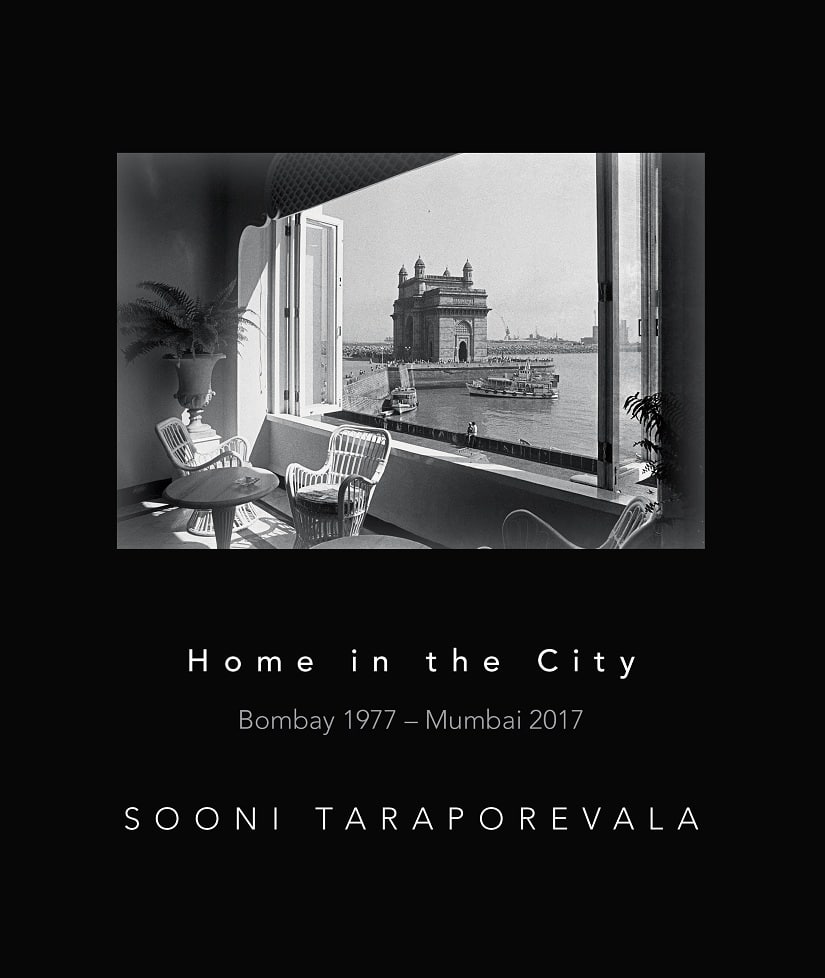 The cover of Sooni Taraporevala’s book Home In The City. Image courtesy: HarperCollins[/caption] The pictures capture well-known personalities who lived or visited Mumbai, as well as strangers she happened to meet. Pico Iyer called her a “connoisseur of initimacy”, and this is evident from the pictures she has taken of the more private moments of her subjects. In one series of pictures taken at a Bombay Times party, Sushmita Sen, and Rishi Kapoor can be seen dancing, eating and making merry, without even being conscious of the camera. This sense of intimacy is also visible in the shot where a man can be seen holding his baby, or in the pictures of her own family relaxing at home. The choice of these subjects is not deliberate, she says. “This book and exhibition happened simply because I wanted to shoot the city. I’m a photographer and the city is an infinite source of inspiration, so wherever it took me, I took pictures,” she adds. [caption id=“attachment_4142369” align=“alignnone” width=“825”]
The cover of Sooni Taraporevala’s book Home In The City. Image courtesy: HarperCollins[/caption] The pictures capture well-known personalities who lived or visited Mumbai, as well as strangers she happened to meet. Pico Iyer called her a “connoisseur of initimacy”, and this is evident from the pictures she has taken of the more private moments of her subjects. In one series of pictures taken at a Bombay Times party, Sushmita Sen, and Rishi Kapoor can be seen dancing, eating and making merry, without even being conscious of the camera. This sense of intimacy is also visible in the shot where a man can be seen holding his baby, or in the pictures of her own family relaxing at home. The choice of these subjects is not deliberate, she says. “This book and exhibition happened simply because I wanted to shoot the city. I’m a photographer and the city is an infinite source of inspiration, so wherever it took me, I took pictures,” she adds. [caption id=“attachment_4142369” align=“alignnone” width=“825”]
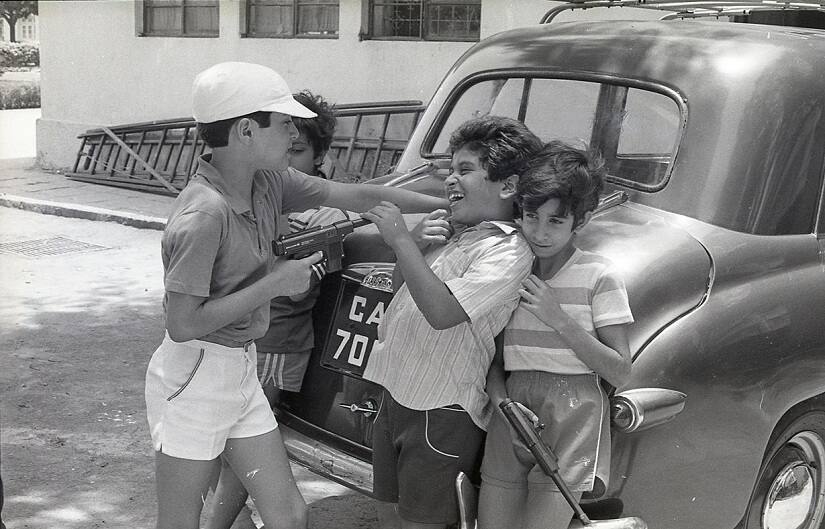 Gun battle at Cusrow Baug, Bombay 1985. Image by Sooni Taraporevala[/caption] One picture captures painter MF Husain, who she happened to meet through her friend Khalid Mohamed. “He was a lovely person, very comfortable around the camera. After a while, he didn’t even notice it,” she says. Two other striking photographs are of children near the sea, placed side by side. One was shot in 1980, while the other was taken only last year, but both have a similar happy, celebratory mood. “They have the same spirit of festive, good cheer despite being separated by so many years,” she says. There’s also a playful picture of Irrfan Khan and another child actor on the sets of Salaam Bombay! Siddharth Dhanvant Shanghvi, who is the honorary director and curator of Sunaparanta, spoke warmly of Taraporevala. Talking about how she is a friend and that it was a pleasure to work with her, he described her vision as being “refulgent with affection, humour and precision”. He says that the first pictures of Bombay (sic) were selected by Devika Daulet-Singh, who he called the best photography gallerist in the country. After this came the process of editing, culling and adding photographs to build the show, as well as form the book. “Because I do this work in an honorary capacity, two things are essential: I have to enjoy the company of the person I work with, and I have to be convinced of the quality of the work, which was a breeze in this case. Sooni has been a long-term collaborator so it was easy to rope in other friends, Salman and Pico, who were delighted to share in our enthusiasm; they contribute two pieces for the book published to mark this show. It’s all a giant act of friendship, really, I couldn’t do it otherwise,” he said. [caption id=“attachment_4142365” align=“alignnone” width=“825”]
Gun battle at Cusrow Baug, Bombay 1985. Image by Sooni Taraporevala[/caption] One picture captures painter MF Husain, who she happened to meet through her friend Khalid Mohamed. “He was a lovely person, very comfortable around the camera. After a while, he didn’t even notice it,” she says. Two other striking photographs are of children near the sea, placed side by side. One was shot in 1980, while the other was taken only last year, but both have a similar happy, celebratory mood. “They have the same spirit of festive, good cheer despite being separated by so many years,” she says. There’s also a playful picture of Irrfan Khan and another child actor on the sets of Salaam Bombay! Siddharth Dhanvant Shanghvi, who is the honorary director and curator of Sunaparanta, spoke warmly of Taraporevala. Talking about how she is a friend and that it was a pleasure to work with her, he described her vision as being “refulgent with affection, humour and precision”. He says that the first pictures of Bombay (sic) were selected by Devika Daulet-Singh, who he called the best photography gallerist in the country. After this came the process of editing, culling and adding photographs to build the show, as well as form the book. “Because I do this work in an honorary capacity, two things are essential: I have to enjoy the company of the person I work with, and I have to be convinced of the quality of the work, which was a breeze in this case. Sooni has been a long-term collaborator so it was easy to rope in other friends, Salman and Pico, who were delighted to share in our enthusiasm; they contribute two pieces for the book published to mark this show. It’s all a giant act of friendship, really, I couldn’t do it otherwise,” he said. [caption id=“attachment_4142365” align=“alignnone” width=“825”]
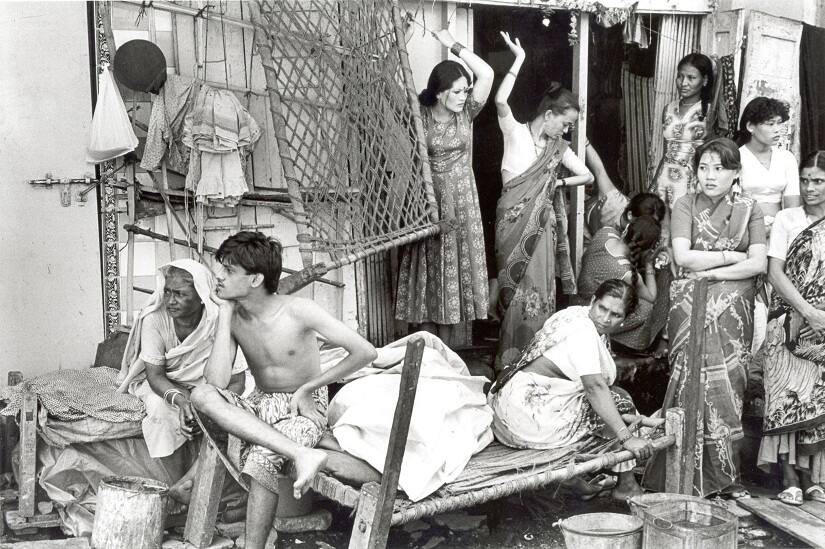 Women of Kamathipura, Bombay 1987. Image by Sooni Taraporevala[/caption] Salman Rushdie has written the foreword to Taraporevala’s book, and in it, he speaks about how a photographer must constantly take artistic and moral decisions each day, if they are to capture the metropolis holistically. He says that Taraporevala manages to do this effectively, whilst portraying a myriad mix of subjects. “I’m struck by how powerfully, how intimately these images look at children, how the innocence of dance and play is suddenly complicated by the arrival of a very real-looking toy gun, and while the boy at whom the gun is pointed is laughing — perhaps a little too uproariously for comfort — the boy holding the gun doesn’t seem to think it’s funny at all. The children of Bombay-into-Mumbai, ragged, cigarette-smoking, hustling on the street, stare out of these photographs, with too much knowledge in their eyes. Sooni Taraporevala has been showing us these children ever since Salaam Bombay!” he writes. Ask Taraporevala how she defines her relationship with the city, and she says, “It’s one of great affection, and I love it. I do get very frustrated sometimes, but I don’t think I could live anywhere else. Even when I lived in other places, I was homesick, so this is definitely my home. My relationship with the city has not changed over the years, despite the city changing.” I ask if she prefers ‘Bombay’ or ‘Mumbai’ (the answer is not difficult to guess), and she says she likes the former because it is the name she grew up listening to and using, rather than the new name given to the city. [caption id=“attachment_4142357” align=“alignnone” width=“825”]
Women of Kamathipura, Bombay 1987. Image by Sooni Taraporevala[/caption] Salman Rushdie has written the foreword to Taraporevala’s book, and in it, he speaks about how a photographer must constantly take artistic and moral decisions each day, if they are to capture the metropolis holistically. He says that Taraporevala manages to do this effectively, whilst portraying a myriad mix of subjects. “I’m struck by how powerfully, how intimately these images look at children, how the innocence of dance and play is suddenly complicated by the arrival of a very real-looking toy gun, and while the boy at whom the gun is pointed is laughing — perhaps a little too uproariously for comfort — the boy holding the gun doesn’t seem to think it’s funny at all. The children of Bombay-into-Mumbai, ragged, cigarette-smoking, hustling on the street, stare out of these photographs, with too much knowledge in their eyes. Sooni Taraporevala has been showing us these children ever since Salaam Bombay!” he writes. Ask Taraporevala how she defines her relationship with the city, and she says, “It’s one of great affection, and I love it. I do get very frustrated sometimes, but I don’t think I could live anywhere else. Even when I lived in other places, I was homesick, so this is definitely my home. My relationship with the city has not changed over the years, despite the city changing.” I ask if she prefers ‘Bombay’ or ‘Mumbai’ (the answer is not difficult to guess), and she says she likes the former because it is the name she grew up listening to and using, rather than the new name given to the city. [caption id=“attachment_4142357” align=“alignnone” width=“825”]
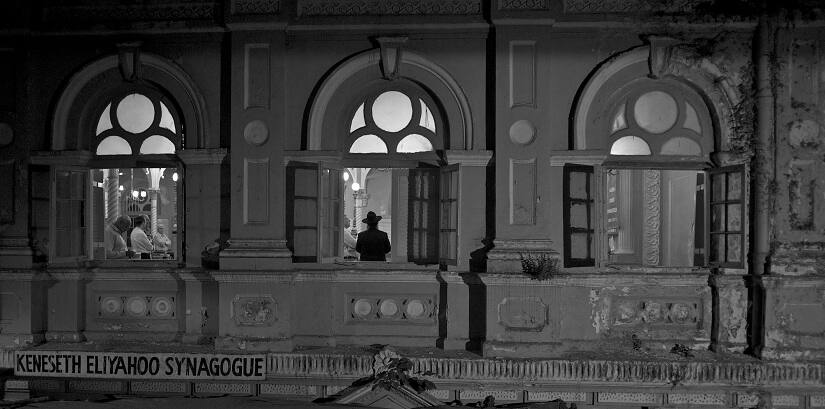 Synagogue, Mumbai 2012. Image by Sooni Taraporevala[/caption] “As an old Bombayite/Mumbaikar, my memories were inevitably stimulated by images of some familiar places and people, for the glamour of the night city and the frisson of film-world celebrity, for everyday moments at Chowpatty and once-a-year occasions like Ganpati; but nostalgia has no place in an appreciation of this work. This is the city as one sharp eye has seen it, and I’m happy to have had Sooni’s eye as my guide,” writes Rushdie in the Foreward. Years have passed and the city has undergone considerable change, but Sooni Taraporevala’s love for it hasn’t, and neither has her style of photographing it. Sooni Taraporevala’s photographs are on display at Chemould Prescott Road, Mumbai till 31 October. It is curated by Siddharth Dhanvant Shanghvi and in collaboration with Sunaparanta, Goa.
Synagogue, Mumbai 2012. Image by Sooni Taraporevala[/caption] “As an old Bombayite/Mumbaikar, my memories were inevitably stimulated by images of some familiar places and people, for the glamour of the night city and the frisson of film-world celebrity, for everyday moments at Chowpatty and once-a-year occasions like Ganpati; but nostalgia has no place in an appreciation of this work. This is the city as one sharp eye has seen it, and I’m happy to have had Sooni’s eye as my guide,” writes Rushdie in the Foreward. Years have passed and the city has undergone considerable change, but Sooni Taraporevala’s love for it hasn’t, and neither has her style of photographing it. Sooni Taraporevala’s photographs are on display at Chemould Prescott Road, Mumbai till 31 October. It is curated by Siddharth Dhanvant Shanghvi and in collaboration with Sunaparanta, Goa.
Sooni Taraporevala captures Mumbai's intimate, characteristic visuals in 'Home In The City'
Neerja Deodhar
• October 15, 2017, 10:06:31 IST
On display are Sooni Taraporevala’s picture of MF Husain, as well as a picture of Irrfan Khan taken on the set of Salaam Bombay!
Advertisement
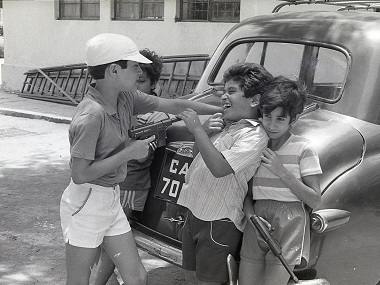)
End of Article